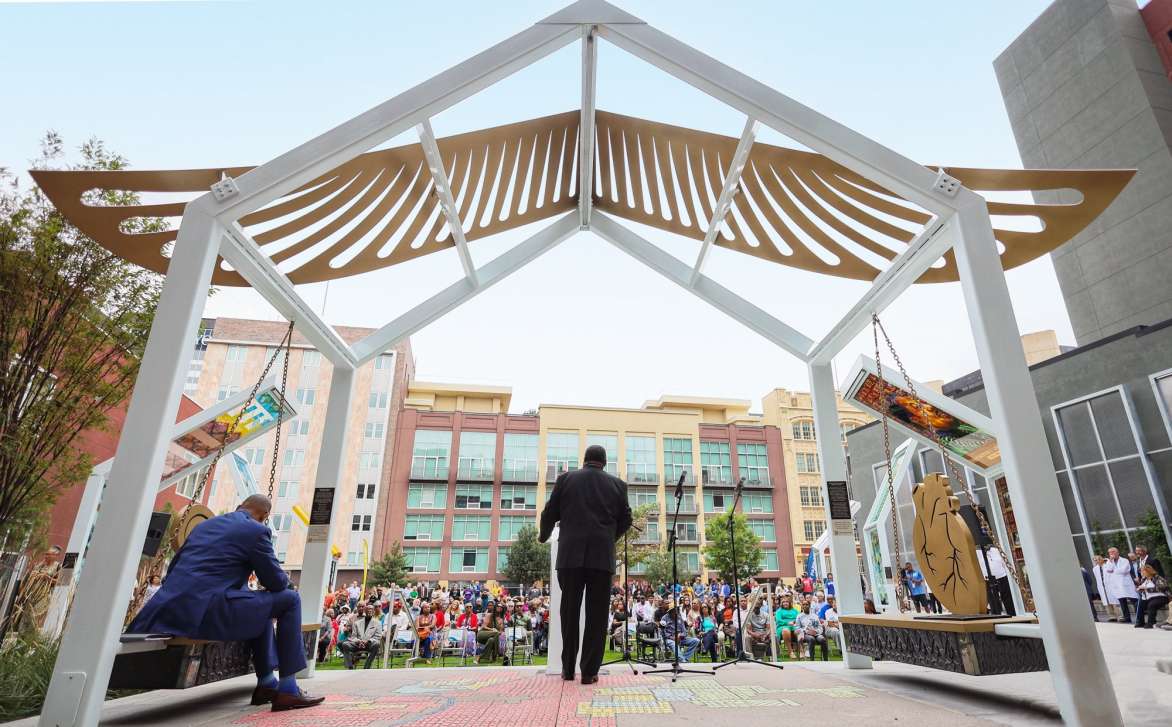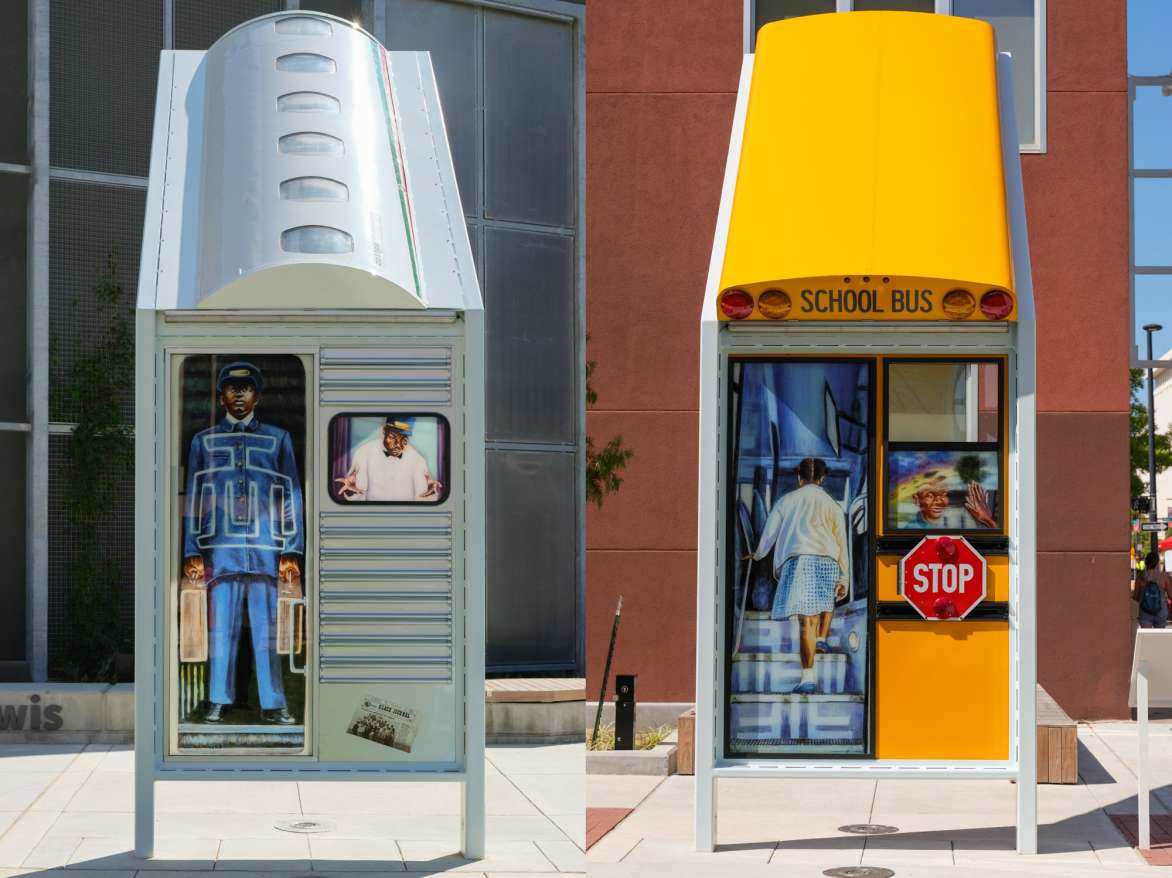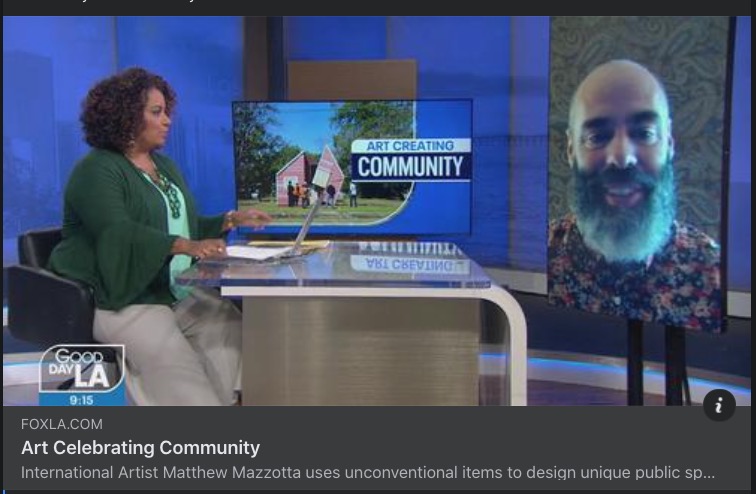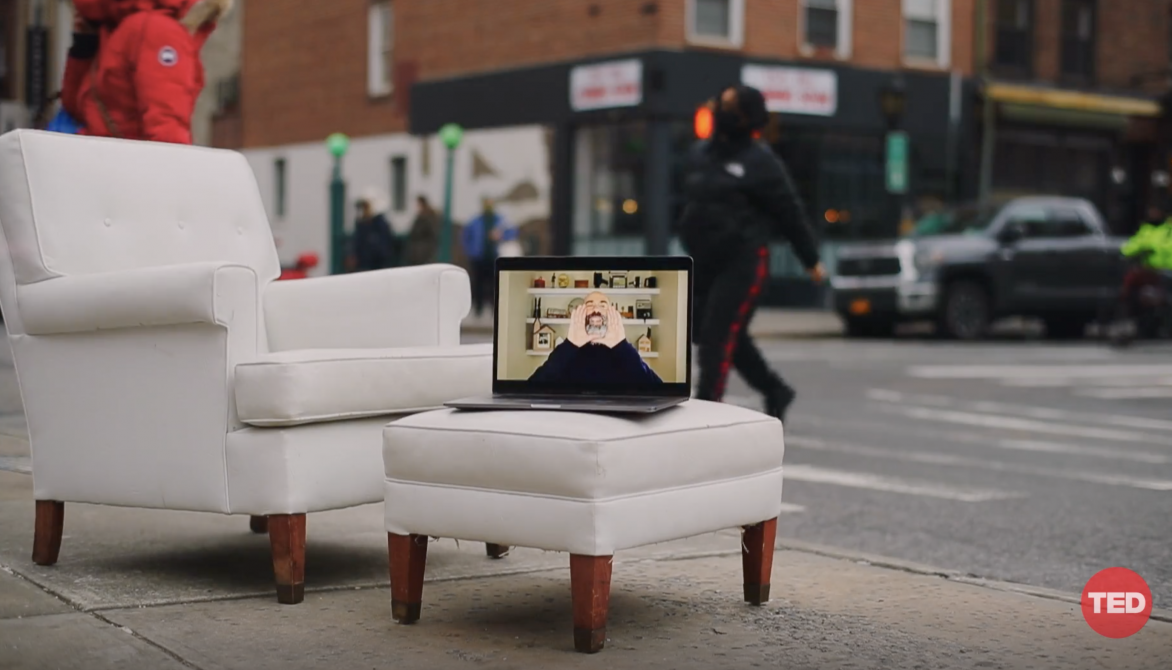Matthew Mazzotta’s (SMVisS ’09) collaborative artwork titled Chester I. Lewis Reflection Park for the City of Wichita Department of Parks and Recreation is nominated for the the 2024 CODAawards. Mazzotta’s Home won two awards at the 2023 CODAworx Summit and Award Ceremony in San Jose – People’s Choice Award and Transportation category.
Chester I. Lewis Reflection Park is the first government funded artwork depicting an African American in downtown Wichita by artists Ellamonique Baccus and Matthew Mazzotta celebrates civil rights leader Chester I. Lewis (1929-1990). At the entrance of Chester I. Lewis Reflection Park, his words etched in granite, challenge visitors “to be free from hypocrisy, sham and acquiescence” by putting “man and his condition at the center of our thoughts and deeds.” Within the park, six 15-foot tall steel “echos” progressively appear to open from a steel house frame at the platform stage. These “echo” structures and the house structure hold images that depict the life of Chester I. Lewis. Original oil paintings and drawings by Ellamonique are imprinted onto monolithic glass and anodized aluminum with an assemblage of school bus and airplane parts. The house structure supports two 13-foot painted aluminum wings as well as benches and original tiles. At the base of the house structure is a Lithomosaic embedded in the concrete, an artistic interpretation of the redlined map of the City of Wichita from 1937. Signage with QR codes links a virtual tour.
The deadline to vote is July 2. Vote here!
















